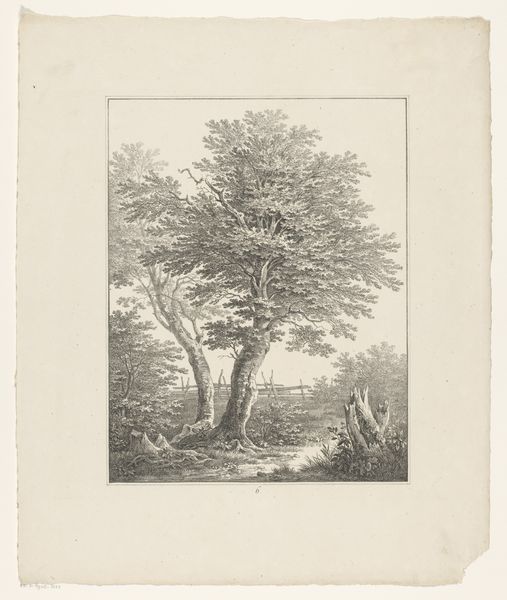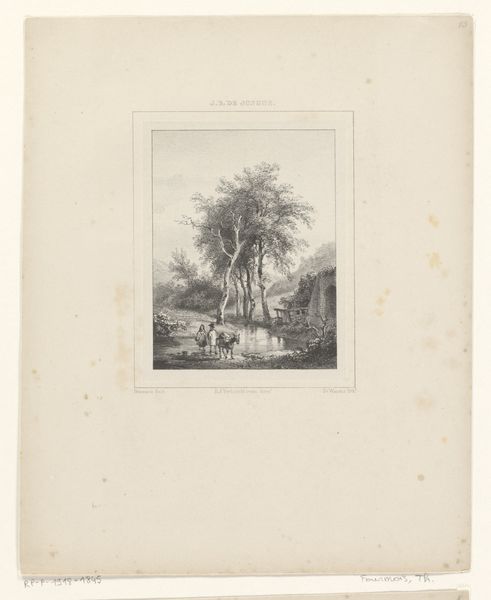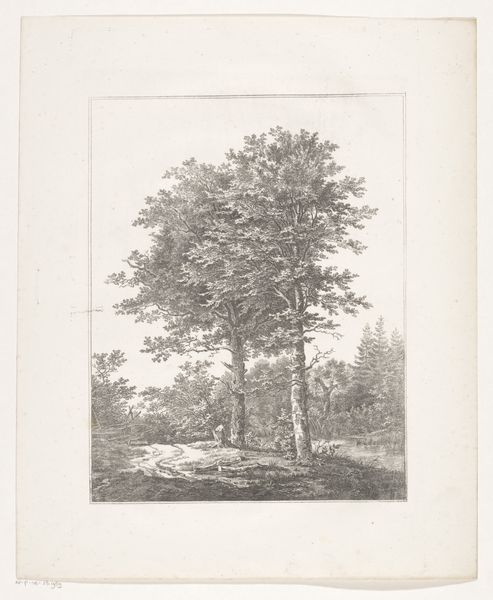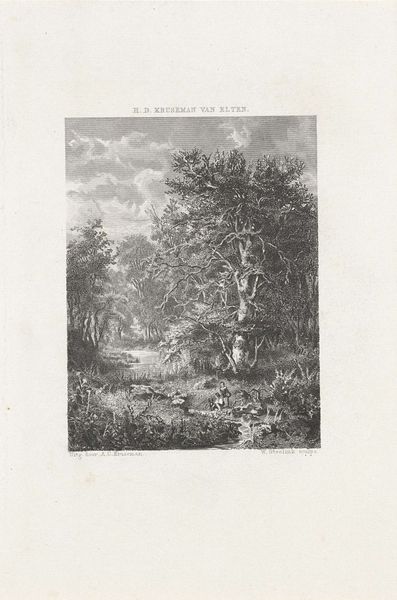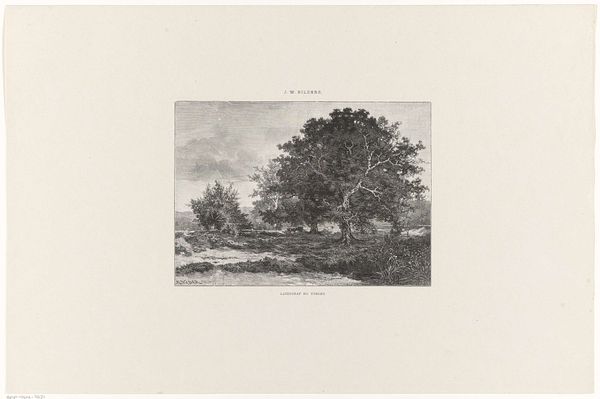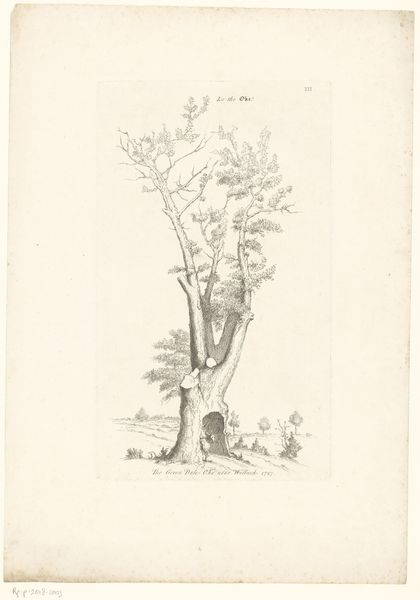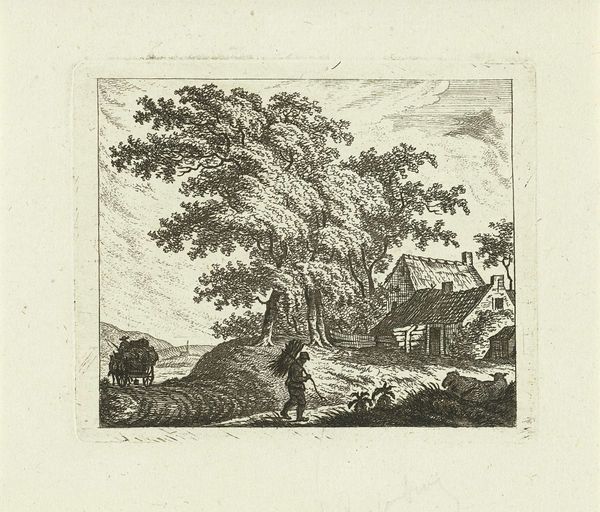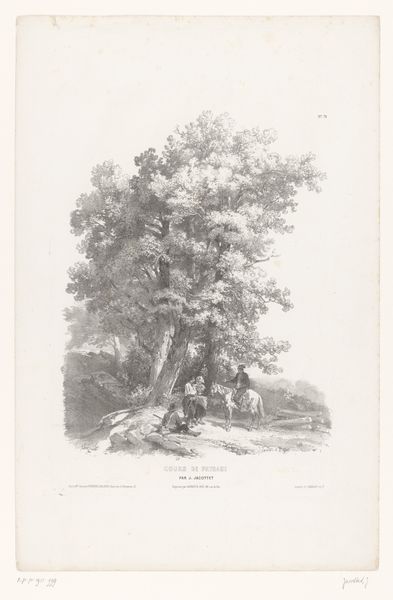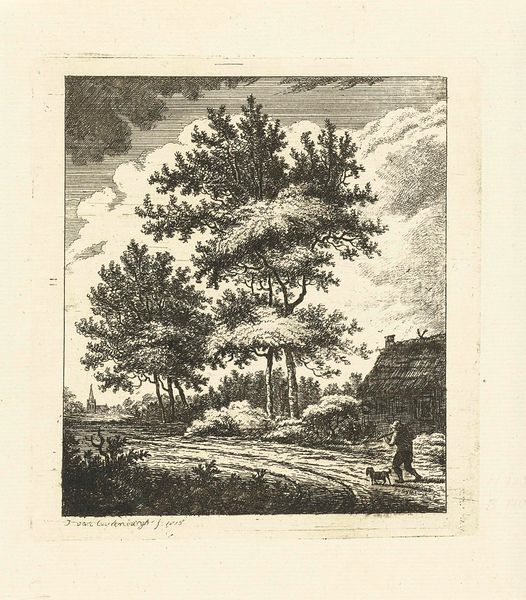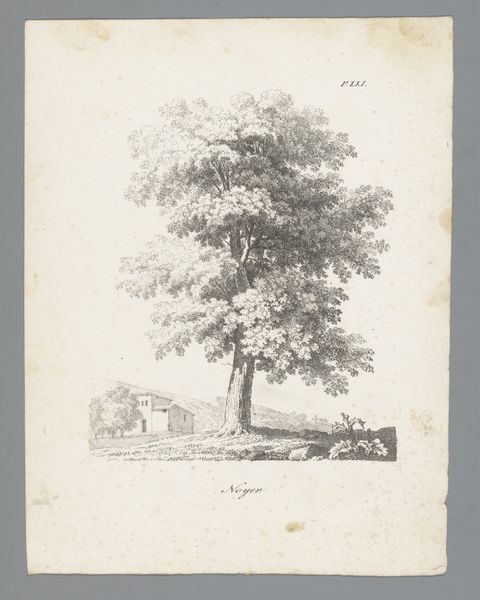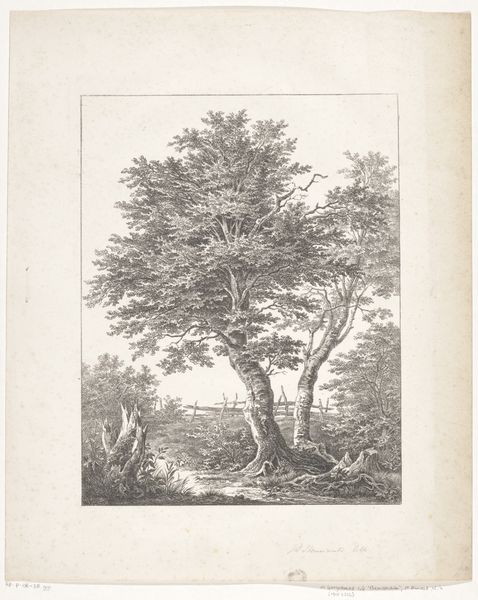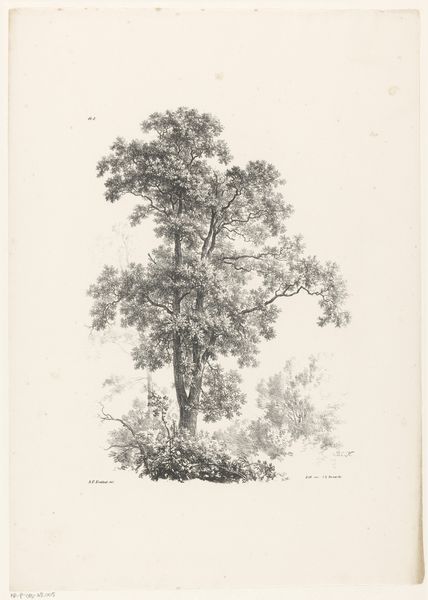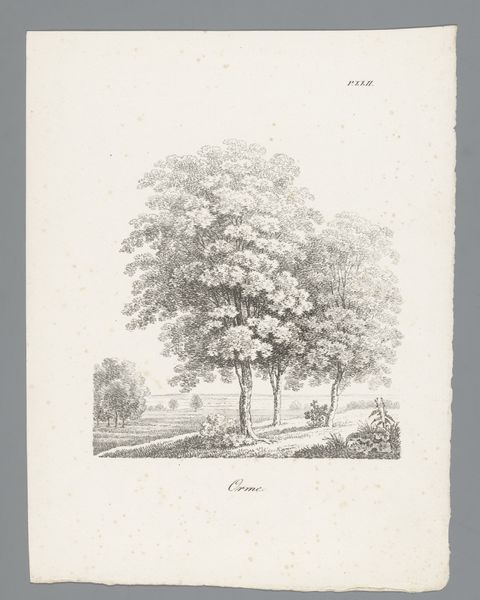
Dimensions: height 171 mm, width 128 mm
Copyright: Rijks Museum: Open Domain
Willem Frederik Wehmeyer created this print, ‘Bosgezicht,’ sometime in the mid-19th century. Wehmeyer was a landscape painter, and here, he provides a glimpse into the forest. This artwork reflects a broader cultural interest in nature that arose in Europe during the Romantic era. As cities grew and industrialized, people began to value and idealize the natural world as a source of solace and inspiration. It also follows the institutional structure of the Dutch Golden Age, which was the widespread commercialization of art. The forest scene, with its focus on light and shadow, evokes a sense of tranquility. But this could also be interpreted as a political statement. By emphasizing the beauty of nature, Wehmeyer may have been critiquing the social and environmental consequences of industrialization. The image's detailed rendering and the engraver's skill also draw attention to the changing economic and social status of artists at this time. Understanding this print requires that we look into the history of Dutch landscape painting and the social context in which Wehmeyer was working. By studying these historical sources, we can better understand the meaning and significance of this image.
Comments
No comments
Be the first to comment and join the conversation on the ultimate creative platform.
